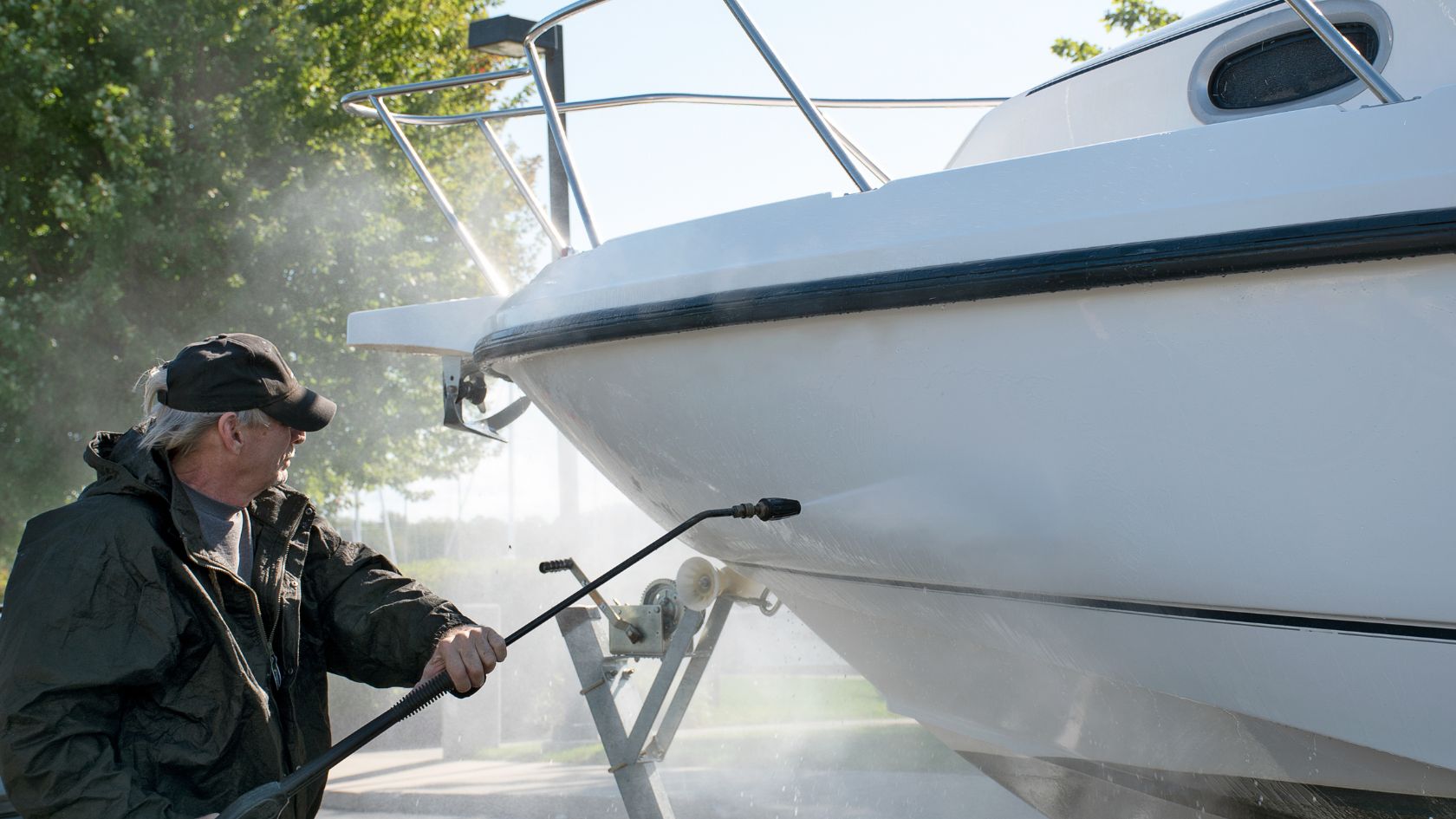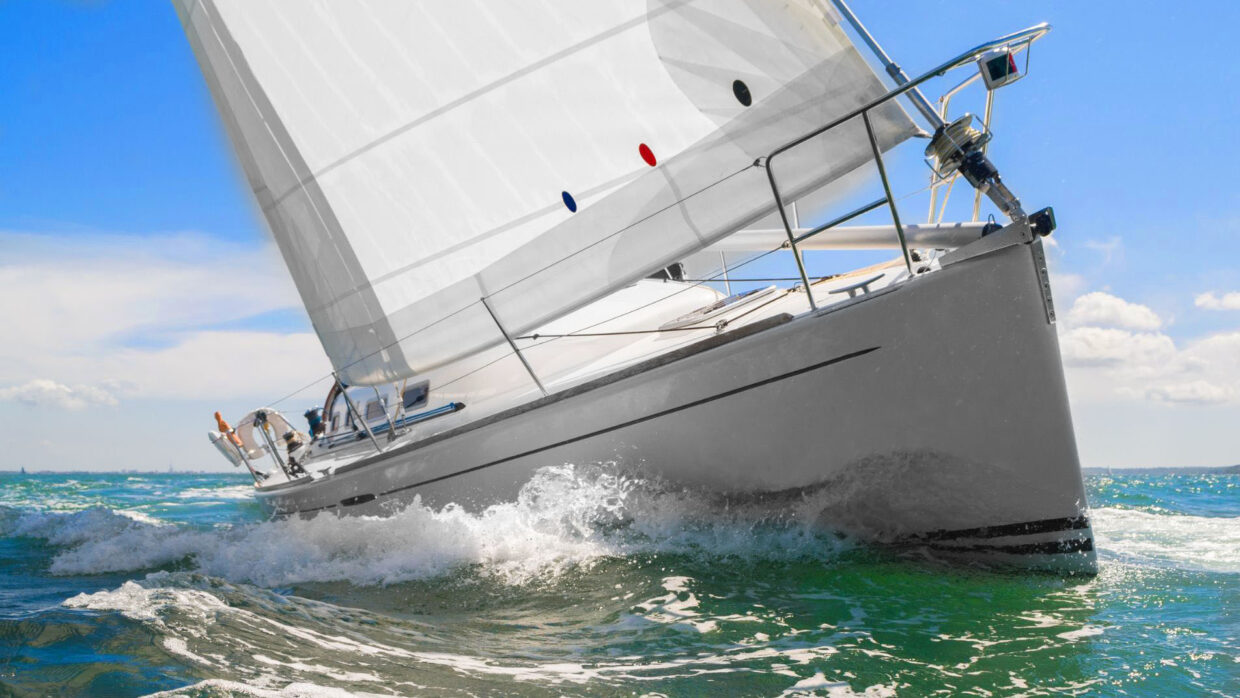
Inspections
Before you depart for any boating excursion, take the time to inspect your craft. Check engine oil, battery cables and the battery. Confirm that wires haven’t become loose or corroded. We recommend inspecting the propeller, hull, steering equipment, bilge pump, air intakes and fire extinguishers. Do you smell gasoline or propane? Don’t ignore it; a dangerous leak may have developed. Remember to look at your trailer coupler, chains and straps as well.
Most other components need inspection less often. They include things like spark plugs, fuel lines and engine mounts. If you’re not sure how to find all of these parts and evaluate their condition, pay an experienced mechanic to inspect your vessel. Keep in mind that most problems cost less to fix when someone notices them sooner.
Oil Changes
An oil change can prevent harmful corrosion, especially when you store your boat for the winter. The instruction manual for your specific engine will tell you how often to perform this task. Professional oil changes cost at least four times more than doing it yourself. It’s crucial to buy marine oil; don’t try to use products intended for other equipment. You can drain old oil from a boat or personal watercraft much more easily with an extractor pump.
Flushing
Outboard and PWC engines benefit from frequent flushing. Whenever you go boating in salty, muddy, brackish or silty water, be sure to flush the engine with clean, salt-free water. The steps differ from one model to the next, so you’ll need to read the motor’s instruction manual. It’s vital to fully drain the water afterward. Never leave water in an engine when it has the potential to freeze.
Propeller
Motorboats need well-maintained propellers to perform optimally. Remember to regularly check this component for bends or dents. It might need repair if its condition has deteriorated. Multiple times each year, you should remove the propeller and examine its shaft. Ensure that the shaft remains free of fishing line and other detritus. It may also need lubrication.
Greasing
At least once every 12 months, it’s necessary to lubricate various parts of your boat and trailer with marine-grade grease. This product may come in tubes that you can apply manually. Otherwise, you’ll need a grease gun. This maintenance task boosts reliability and performance. Examples of parts that need lubrication include outboard steering shafts, trailer wheel bearings, trailer couplers and certain pumps. Grease can also lubricate any metal hinges on your vessel.
Trailer
If you use a trailer to transport your boat, it needs routine maintenance to ensure safety. Remember to inspect the lights, tires and brake system from time to time. The trailer may need more brake fluid or new pads. To help brakes last longer, quickly wash any salt water off of them. Your trailer might have a hose inlet that channels fresh water to the brakes. You can also prevent rust by washing the wheels.
Batteries
Does your vessel or PWC contain any batteries? If so, they generally need replacement after four to six years. Marine batteries have a longer lifespan than other units that deliver the same voltage. When you stop boating for months at a time, take the battery out and connect it to a charger that keeps it at a full charge.
Keep It Dry
One of the simplest boat maintenance tips is to dry surfaces with a towel whenever possible. This can prevent mold, stains and corrosion. Just about any vessel will look better and potentially last longer when you reduce lingering moisture. The same goes for accessories like life vests; make sure they’re completely dry before storing them.
Bilge Upkeep
If oil leaks into your boat’s bilge water, it could pollute the environment by spilling into the lake or sea. You may avoid this outcome with proper maintenance, including engine tuneups. An absorbent pad can soak up oil beneath the engine. Inspect belts, clamps, filters and hoses regularly. Don’t install excessively short or long hoses; they fail more easily. Consider using a bilge filter to extract any oil from the water before the pump discharges it.
Anodes
Like a home water heater, your vessel probably has sacrificial anodes. Some people call them “zincs.” They’re common in crafts with outboard engines. Basically, they “sacrifice” themselves because they corrode rather than more important metals. It’s wise to replace anodes when more than half of the material has corroded. Aluminum anodes cost less and often last longer, but zinc or magnesium units work best in some types of water.
Gelcoat
Most fiberglass vessels have gelcoat finishes. This coating shields fiberglass from the elements and enhances the look of your boat. To keep the gelcoat intact, you’ll need to wax and polish it. Only do so after thoroughly cleaning the surface. It’s best to complete this task twice every year or more frequently. A well-maintained coating looks glossy; it will begin to appear chalky when it decays.
Painting
If old paint or a gelcoat finish deteriorates beyond repair, apply fresh paint. You’ll need to thoroughly wash the hull before sanding it. We recommend wearing a mask or respirator while sanding. Next, remove all sanding dust from the hull. Apply painter’s tape to surfaces that you don’t want to refinish. Wearing disposable gloves, brush or roll an undercoat on the hull. Paint on a warm day that isn’t too muggy. Surfaces may take a few days to fully dry.
Windows
Many boats have windows made of acrylic or clear PVC (vinyl). They can easily turn yellow and decay without the right maintenance. Neither type should ever be sprayed with glass cleaner. Avoid using any chemicals or even touching the surfaces unnecessarily. We suggest washing and drying vinyl windows with soft fabric before applying PVC spray polish. Acrylic also benefits from light cleaning and polishing. Gentle soaps are safe but not detergents.
Sails
Bleach and other chemicals harm sailboat sails, but you can use dish detergent to wash them. Consider cleaning sails on the lawn with a soft brush before thoroughly rinsing them. After washing a sail, you can patch any holes or rips. It’s important to do so before they grow larger. Adhesive patches work well in some instances. However, sewing will repair your sail in a longer-lasting way.
Canoe Care
If you own a canvas or wooden canoe, be sure to seal any scratches as soon as possible. A clean interior helps to minimize scratching. Varnished wood trim will need a new coat of varnish after about three years. You’ll have to lightly sand it first. Plastic canoes don’t require as much upkeep, but they’re vulnerable to sun damage. You can preserve them by applying an ultraviolet protectant.
Kayaks
A modern kayak demands relatively little maintenance. We suggest washing the hull with water when you finish boating for the day. Use gentle soap if surfaces need more thorough cleaning. Like plastic canoes, kayaks and inflatables benefit from UV protectants. It’s also best to keep these boats out of the sun; bring them indoors whenever possible.
Storage
Before you store your craft at the end of the season, fully clean and dry it. If you have a fishing vessel with a livewell, flush it thoroughly. Drain any water from the engine before using propylene glycol antifreeze. You’ll need to winterize the motor by changing its oil, adding fuel and treating it with fuel stabilizer. Finally, put a cover or marine shrink-wrap on your craft.
Routine upkeep takes a lot of time and effort, but it boosts efficiency and extends your vessel’s lifespan. This guide may not cover every necessary task; the full details of boat maintenance could easily fill a thick book. Remember to check your owner’s manual and conduct more research when needed. Also, please keep in mind that Boatzon offers many useful maintenance supplies and tools, including oil changers, covers, fuel stabilizers and more.




